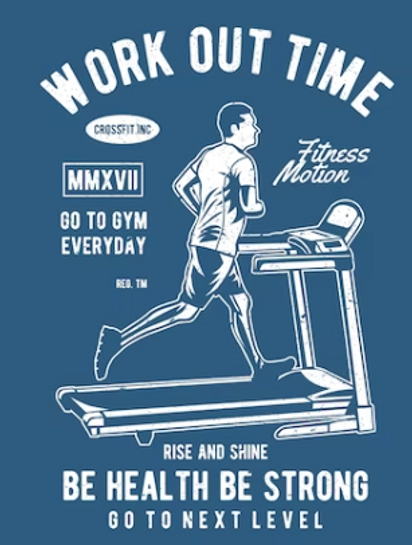The importance of exercise cannot be overstated. Regular physical activity not only improves cardiovascular health but also boosts mood, reduces stress, and can even help prevent chronic diseases. One popular form of exercise is treadmill workouts, which offer a convenient and versatile way to get in shape. However, determining the optimal time to spend on a treadmill can be a challenge. In this comprehensive guide, we'll explore the benefits of treadmill workouts, discuss the factors to consider, and provide recommendations from fitness experts to help you find the right balance for your fitness goals and schedule.
Understanding the Benefits of Treadmill Workouts
Treadmill workouts offer a range of benefits for individuals of all fitness levels. These include:
- Improved Cardiovascular Health: Regular treadmill use can strengthen the heart and improve overall cardiovascular function, reducing the risk of heart disease and other related conditions.
- Increased Calorie Burn: Treadmill workouts can be an effective way to burn calories and support weight management or weight loss goals.
- Low-Impact Exercise: Compared to running on pavement, treadmill workouts are gentler on the joints, making them a suitable option for individuals with joint-related concerns or those recovering from injuries.
- Versatility: Treadmills allow for a variety of workout options, from steady-state cardio to interval training, enabling users to customize their routines and challenge themselves.
- Convenience: Treadmills provide a convenient way to exercise, especially during inclement weather or when access to outdoor running spaces is limited.
Factors to Consider Before Determining Treadmill Time
Before deciding how much time to spend on a treadmill, it's important to consider several factors that can influence the optimal duration and intensity of your workouts:
- Fitness Level: An individual's current fitness level, including their cardiovascular endurance and overall physical condition, will determine the appropriate starting point and progression of their treadmill routine.
- Fitness Goals: Whether the goal is weight loss, improved cardiovascular fitness, or general health maintenance, the time spent on the treadmill should be tailored to achieve the desired outcomes.
- Age and Health Considerations: Factors such as age, pre-existing medical conditions, and any physical limitations should be taken into account when determining the appropriate treadmill workout duration and intensity.
- Schedule and Lifestyle: The amount of time available for exercise, as well as other commitments and responsibilities, will play a role in determining the feasibility and sustainability of a treadmill-based workout routine.
- Recovery and Rest: Allowing for adequate rest and recovery between treadmill sessions is crucial to prevent overtraining and ensure continued progress.
Setting Fitness Goals
Establishing clear and measurable fitness goals is a crucial step in determining the appropriate time to spend on a treadmill. These goals can range from improving overall cardiovascular health to achieving specific weight loss or endurance targets. By setting SMART (Specific, Measurable, Achievable, Relevant, and Time-bound) goals, individuals can better track their progress and make necessary adjustments to their treadmill routines.
Recommendations from Fitness Experts
Fitness experts offer the following recommendations for determining the optimal time to spend on a treadmill:
- Beginner Treadmill Users: Start with 10-20 minutes of treadmill exercise, 3-4 times per week, and gradually increase the duration and frequency as fitness levels improve.
- Intermediate Treadmill Users: Aim for 30-45 minutes of treadmill exercise, 4-5 times per week, focusing on a mix of steady-state cardio and interval training.
- Advanced Treadmill Users: Consider 45-60 minutes of treadmill exercise, 5-6 times per week, with a balanced routine that includes both high-intensity and recovery sessions.
- Interval Training: Incorporate interval training, which involves alternating periods of high-intensity and low-intensity or recovery periods, to maximize the benefits of treadmill workouts.
- Listen to Your Body: Pay attention to signs of overtraining, such as fatigue, muscle soreness, or decreased performance, and adjust your treadmill routine accordingly.
Finding the Right Balance for Your Schedule
Incorporating treadmill workouts into a busy schedule can be a challenge, but it's essential to find the right balance to ensure consistency and long-term success. Consider the following strategies:
- Prioritize Your Workouts: Make treadmill sessions a non-negotiable part of your weekly routine, just like other important commitments.
- Utilize Short, High-Intensity Intervals: Even 10-15 minutes of high-intensity interval training can be an effective way to fit in a treadmill workout when time is limited.
- Incorporate Treadmill Breaks: Consider taking short treadmill breaks throughout the day, such as during your lunch hour or between meetings, to boost your overall physical activity.
- Experiment and Adjust: Be willing to try different approaches and adjust your treadmill routine as needed to find a sustainable balance that fits your lifestyle and preferences.
Incorporating Interval Training on the Treadmill
Interval training, which involves alternating periods of high-intensity and low-intensity or recovery periods, can be a highly effective way to maximize the benefits of treadmill workouts. Some key considerations for incorporating interval training include:
- Interval Duration: Experiment with different interval lengths, such as 30 seconds to 2 minutes of high-intensity effort followed by an equal or longer recovery period.
- Intensity Levels: Adjust the treadmill speed and incline to challenge yourself during the high-intensity intervals, while allowing for adequate recovery during the low-intensity periods.
- Progression: Gradually increase the duration and intensity of the high-intensity intervals as your fitness level improves.
- Variety: Mix up the interval patterns, such as alternating between sprints and incline-based intervals, to keep your workouts engaging and challenging.
Tracking Progress and Making Adjustments
Monitoring your progress is essential for ensuring the effectiveness of your treadmill routine and making necessary adjustments. Consider the following strategies:
- Metrics to Track: Keep track of metrics such as distance, time, speed, incline, and heart rate to measure your progress over time.
- Periodic Assessments: Conduct regular fitness assessments, such as timed mile runs or VO2 max tests, to objectively evaluate your cardiovascular fitness improvements.
- Adjusting the Routine: Based on your progress and feedback from your body, be willing to adjust the duration, intensity, and frequency of your treadmill workouts to continue challenging yourself and reaching your goals.
Listening to Your Body
Ultimately, the most important factor in determining the optimal time to spend on a treadmill is listening to your body. Pay attention to signs of overtraining, such as excessive fatigue, muscle soreness, or decreased performance, and adjust your routine accordingly. Additionally, be mindful of any discomfort or pain and consult with a healthcare professional or certified personal trainer if necessary.
Conclusion
Determining the optimal time to spend on a treadmill is a highly personalized process that requires considering various factors, including fitness level, goals, and lifestyle. By understanding the benefits of treadmill workouts, setting clear fitness goals, and incorporating expert recommendations, individuals can develop a sustainable treadmill routine that supports their overall health and well-being. Remember to listen to your body, track your progress, and be willing to make adjustments as needed to ensure long-term success.


